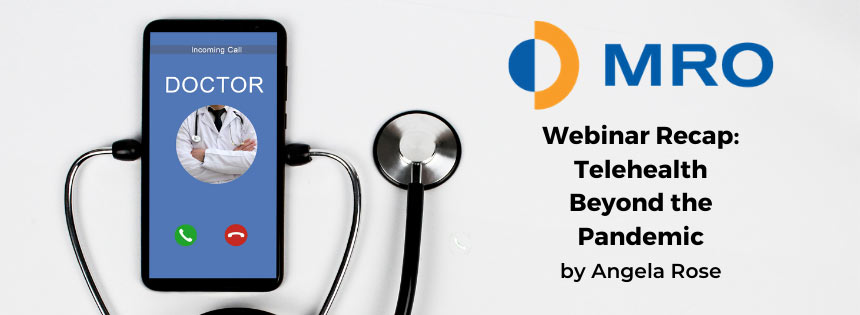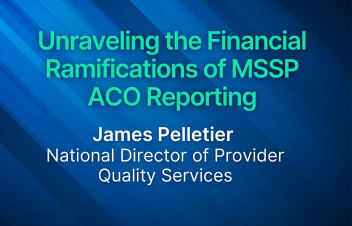
Recently, my colleague Diana Warner and I presented Telehealth: Beyond the Pandemic. During this webinar we discussed the evolving role of telehealth in healthcare and how to manage and protect the virtual workforce. As telehealth remains front and center, what does this mean for healthcare, and more specifically for health information management (HIM)?
Telehealth Defined
Telehealth is defined as the use of electronic information and telecommunications technologies to support long-distance clinical healthcare, patient and professional health-related education, public health, and health administration. The technologies can include:
- Video conferencing
- Internet
- Store-and-forward imaging
- Streaming media
- Terrestrial and wireless communications
Telemedicine on the other hand refers specifically to remote clinical services. Therefore, it is important to note that while all telemedicine is telehealth, not all telehealth is telemedicine.
Prior to the pandemic, only 14% of Americans had used telemedicine at least once. Since the pandemic, the number of Americans who reported having participated in at least one telehealth visit has increased by 57%. Projecting beyond the pandemic, 23% of respondents to this study said they plan to use telehealth after the pandemic ends.
By bringing virtually accessible healthcare to many Americans, the landscape of telemedicine has drastically changed. A HIMSS study published at the end of 2020 indicates that 77% of Americans are willing to use some form of telehealth post-COVID, with 41% preferring virtual visits over in-person visits.
Managing Telehealth
As an HIM professional, properly managing telehealth is vital especially when it comes to policies and procedures. For instance, do you record telehealth sessions? If so, what are the applicable telehealth retention guidelines in place within your state? How are the records secured, especially virtual recordings of the telehealth visits? At what point do you purge the records after they have been transcribed? And who will have access to those materials? It is important to ask these questions and establish policies accordingly.
Additional items to consider include:
- Documentation Requirements – policies to identify who owns the records and who is responsible for amendments and release of information
- Medical Credentialing – although states have lifted credentialing requirements to practice medicine across state lines, ensure this is not a requirement in your state
- Licenses to Practice – how states look at interstate licenses, specifically to avoid blocking telehealth
- Privacy and Security – same policies applicable to both telehealth and in-person visits
- Telehealth Visits Requirements – where the visits are conducted, such as a private area to ensure protected health information (PHI) is not visible to others
- Monitoring and Auditing – how an implemented policy works in reality
- Business Associate Agreements – if needed, must be in place
- Liability Insurance – last update and coverage for telehealth
Tips and Takeaways – From Reaction to Reality
Conduct an Assessment
If you have not already done so, it’s time to assess where you currently stand with regard to telehealth. Are the policies and procedures you have in place working? What education and training are you providing your workforce? How is the virtual environment setup supporting devices, privacy and security? Finally, what needs to be reviewed and updated again and again?
Stay Current
You should always stay up to date with the current legislation, trends, challenges and best practices. For instance, did you know that the CISA, FBI and HHS assess malicious cyber actors that are targeting the HPH Sector with Trickbot malware, often leading to ransomware attacks, data theft, and the disruption of healthcare services? Such issues are particularly challenging for organizations amid the COVID-19 pandemic. Therefore, administrators need to balance this risk when determining their cybersecurity investments.
Know Your Resources
Knowing where to find answers to your questions is often half the battle. While many resources are available, make sure you rely on support from a trusted source. Sticking to associations or government sites is always a safe bet. The information and facts used for this blog post, and the webinar presentation, are included in the resources section within the slide deck.
I encourage you to request the playback of our webinar (and earn a free CEU) to obtain more information and insights about telehealth beyond the pandemic. To do so, click here.


